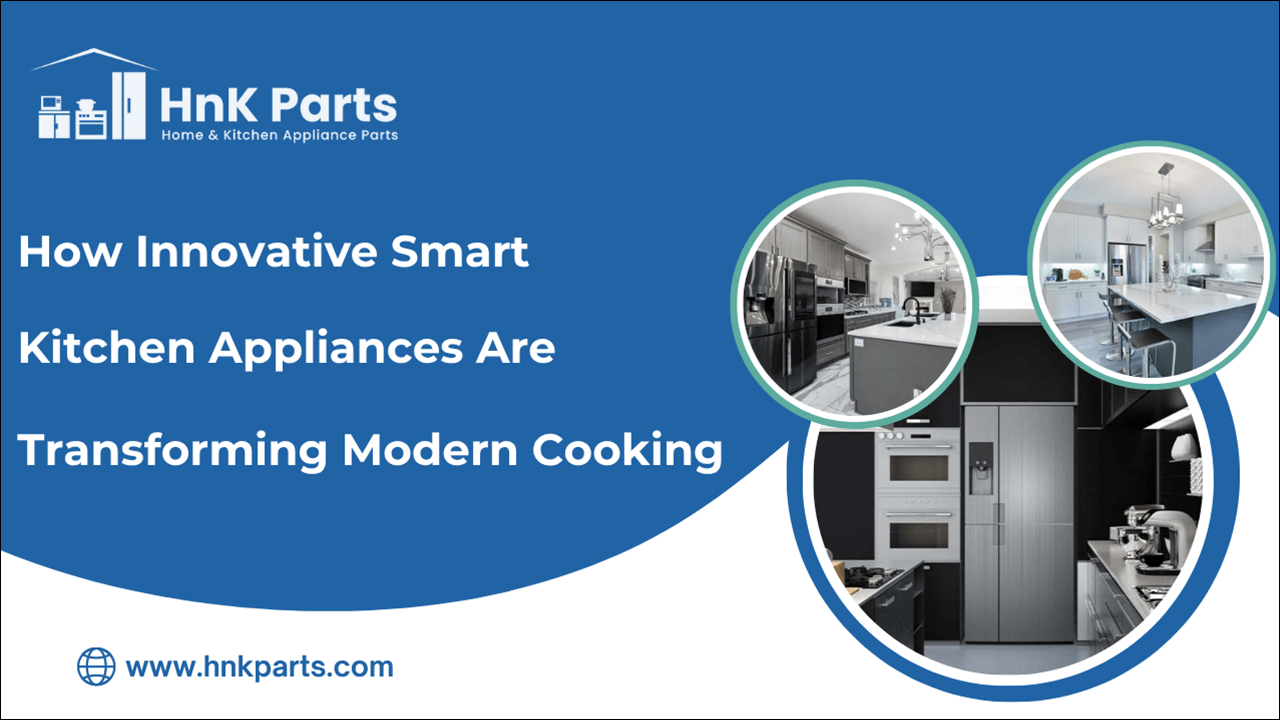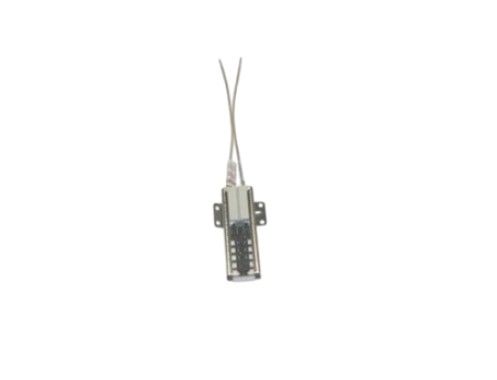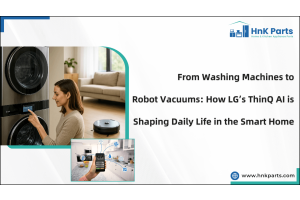
How Innovative Smart Kitchen Appliances Are Transforming Modern Cooking
From the crackling hearths of ancient times to today’s sleek, multifunctional countertops, kitchens have always been at the forefront of domestic innovation. Over centuries, cookware evolved from clay pots and iron skillets to stainless-steel ranges and high-powered blenders. No longer mere passive tools, ovens, refrigerators, and coffee makers now come alive with sensors, connectivity, and intelligence. These smart kitchen appliances promise to streamline meal preparation, reduce energy consumption, and even learn our tastes. As the Internet of Things (IoT) and artificial intelligence (AI) seep into the culinary realm, the very act of cooking is being reinvented. This article explores how these innovations are transforming modern cooking, making it faster, safer, and more precise
What Are Smart Kitchen Appliances?
Smart kitchen appliances are networked devices that combine traditional mechanical or electronic functions with advanced connectivity, data analytics, and automated control.
-
Embedded sensors: Temperature probes, humidity sensors, weight scales, motion detectors, cameras
-
Connectivity modules: Wi-Fi, Bluetooth Low Energy, Zigbee, Z-Wave, Thread
-
On-device intelligence: Microprocessors running firmware or edge-AI models
-
Cloud platforms: Remote diagnostics, over-the-air updates, AI-driven analytics
Key Benefits of Smart Kitchen Appliances
Smart kitchen appliances revolutionize home cooking by blending technology with convenience. From time-saving automation to energy efficiency and safety, these intelligent tools enhance every aspect of meal prep, appliance management, and household sustainability.
Time-saving automation
-
Recipe-driven cooking: Apps walk you through multistep recipes, automatically adjusting cook time and temperatures. For example, the precision ovens can run guided sous-vide programs with pinpoint control.
-
Voice commands: Integrate with Alexa, Google Assistant, or Siri—ask “Alexa, start preheating to 350°F” while your hands are busy.
-
Pre-scheduling: Program the dishwasher, coffee brewer, or air fryer to start at specific times, aligning with your morning routine or dinner prep.
Energy efficiency & cost savings
-
Adaptive cycles: Dishwashers like Miele’s AutoDos adjust detergent and water based on soil levels, saving up to 40% on water per cycle.
-
Peak/off-peak scheduling: Smart meters integrate with appliances, running heavy loads (e.g., clothes washer, dishwasher) when rates are lowest.
-
Energy monitoring: Dashboards show real-time consumption. One study found that smart appliances can reduce household energy use by 10–15% annually.
Precision cooking & consistency
-
Built-in probes & cameras: The Oven’s interior camera takes periodic snapshots and uses computer vision to estimate doneness. You receive alerts at the perfect moment.
-
Smart probes: Connected meat probes communicate target temperatures to the app, auto-shutting off or switching modes when reached.
Enhanced safety features
-
Automatic shutoffs: If a pan overheats or the oven door remains ajar for too long, the appliance powers down to prevent fires.
-
Leak & smoke detection: Some smart ranges integrate gas sensors and smoke alarms, sending alerts to your phone and the local fire department if thresholds are crossed.
Nutritional & waste tracking
-
Inventory insights: Smart fridges log items and their expiration dates, helping reduce food waste by up to 20%.
-
Nutritional analysis: Apps can calculate macro- and micronutrient breakdowns based on scanned recipes and ingredients.
Popular Smart Kitchen Innovations: The Future of Culinary Convenience
From voice assistants to robotic cooking stations, these innovations bring efficiency, precision, and personalization to everyday cooking.
-
Wi-Fi enabled cooking ranges: Combine gas burners for stovetop control with induction cooktops for rapid heating and precision. Adjustable temperature zones are controllable via the app. Internal cameras let you peek at your roast from anywhere; some brands offer two-way audio to ask questions.
-
App-controlled coffee makers & air fryers: Save exact water-to-coffee ratios, temperature, and steep times. Breville’s Precision Brewer remembers profiles for up to eight family members. The Philips Airfryer app uploads dozens of region-specific recipes with precise cooking curves. Notifications for descaling, filter changes, and deep-clean cycles.
-
Emerging gadgets: Devices like Anova Culinary’s Nano track water temperature to ±0.1°C. Traeger Wi-Fi-enabled grills allow remote temperature control and recipe-guided smoke profiles. Countertop robots that scan ingredients, chop, stir, and even plate dishes autonomously.
Homeowners Overlook: The Most Valuable Home Appliance Improvement Ideas
The Role of AI and Machine Learning in Modern Cooking Appliances
Artificial Intelligence and Machine Learning are transforming kitchen experiences by delivering smarter, more responsive, and personalized cooking solutions.
|
Section |
Description |
|
Personalized cooking suggestions |
|
|
|
|
|
|
Learning user behavior & preferences |
|
|
|
|
|
|
Computer vision & sensor fusion |
|
|
|
|
|
|
Integration with recipe databases & smart assistants |
|
|
|
|
Integration with Smart Home Ecosystems in Modern Kitchens
Smart kitchens today are more than connected appliances, they’re intelligent, responsive, and unified through powerful ecosystems.
-
Matter & homekit: Bring under one roof devices from multiple manufacturers, Philips Hue lights, Nest thermostats, and Samsung SmartThings appliances.
-
IFTTT & zapier: Create custom automations. “If the oven preheats, then turn on the vent hood light.”
-
Cross-device communication: If the oven senses smoke, the whole home pauses to prevent circulating odors and activates the kitchen exhaust fan.
Key Challenges and Considerations in Adopting Smart Kitchen Appliances
Smart kitchen appliances offer advanced functionality, but they also come with practical hurdles that consumers and businesses must navigate.
-
Cost & accessibility: Upscale models often command 30–100% premiums over traditional counterparts. Lower-income or rural households may lack robust internet or affordable entry-level smart appliances.
-
Cybersecurity & data privacy: Unpatched firmware, default passwords, and unsecured local networks create risks of unauthorized control or data leaks. Terms of service may grant manufacturers the right to analyze and monetize usage patterns, shopping history, and voice recordings.
-
Interoperability & vendor lock-in: Some brands restrict integrations to their own platforms, hindering cross-device collaboration. Slow adoption of open standards means buyers must choose carefully to avoid obsolete or siloed systems.
-
Learning curve & support: Touchscreens, nested app menus, and firmware updates can frustrate non-technical users. Professional installation, network troubleshooting, and periodic firmware upgrades require vendor or third-party service calls.
The Future of Smart Cooking
A glimpse into how intelligent technologies, robotics, and eco-conscious systems are revolutionizing kitchens for the next generation.
-
Countertop culinary robots: Units like Moley or Rotimatic already automate dough rolling, flipping, and basic cooking tasks, foreshadowing fully robotic home kitchens.
-
Advanced sensors & edge AI: Fridge cameras that assess produce freshness by analyzing color spectra beyond visible light. AI models running locally for privacy, speed, and offline functionality—critical for safety-critical shutoff commands.
-
Interoperability & open ecosystems: Projects like Matter, Open Connectivity Foundation (OCF), and AllJoyn are striving to simplify cross-brand device control. Open-source platforms and home server solutions (e.g., Home Assistant) democratize smart kitchen customization.
Supercharge Your Home Kitchen with These Innovative, Lightweight, and Portable Appliance Essentials
Smart kitchen appliances are redefining how we cook, eat, and manage our homes. By harnessing IoT connectivity, AI-driven personalization, and seamless integration with broader home ecosystems. While challenges around cost, cybersecurity, and interoperability persist, continuous advancements in robotics, edge AI, and open standards promise to democratize access and elevate the kitchen into a truly intelligent space. Whether you’re a busy professional, a culinary enthusiast, or someone who simply values convenience, embracing smart kitchen solutions gradually can turn daily cooking into an effortless, delightful, and sustainable experience. HnKParts offers high-quality home appliance parts in the USA, including Stove & Oven Parts, Dishwasher Parts, Refrigerator Parts, Washing Machine Parts, and Dryer Parts to keep your appliances running smoothly.
FAQs
Can smart kitchen appliances help with dietary restrictions or meal planning?
Yes, many smart kitchen appliances and apps come with integrated nutritional databases and custom recipe suggestions tailored to dietary needs like gluten-free, keto, or vegan diets. Some smart fridges even recommend meals based on available ingredients and user-set dietary goals.
Do smart kitchen appliances work during internet outages?
Most smart kitchen appliances have basic functionality that still works offline. However, remote control, updates, and smart features may be limited or inaccessible until connectivity is restored.











